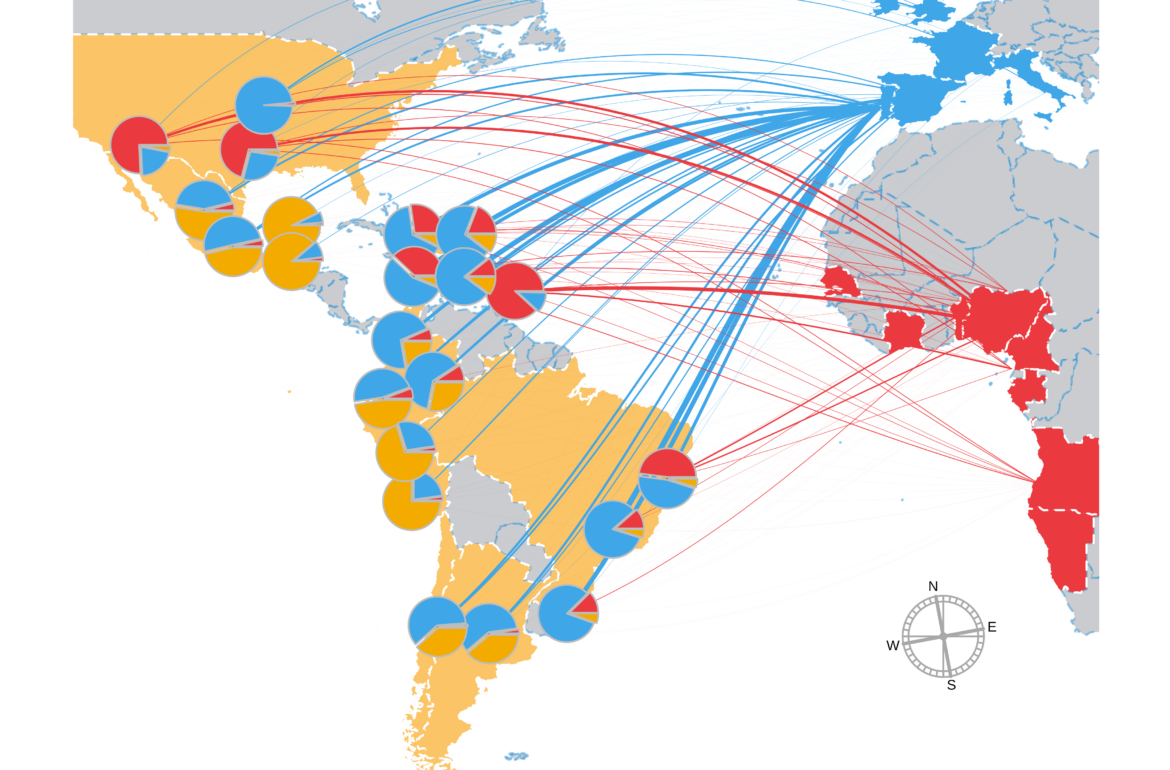Americas, although inhabited by modern humans relatively recently compared to the Old World, are today characterised by exceptionally high genetic diversity. This has been shaped by historical migrations, such as European Colonialism, the Atlantic Slave Trade and more recent waves of economic migration. All these events have contributed to the gene pool of the initial wave of peopling of Americas. These movements of people have resulted in a mosaic of genetic fragments of different ancestry interspersed in present-day American genomes.
In a recent study population geneticists Francesco Montinaro and Linda Ongaro from the University of Tartu analysed the DNA of ~12,000 individuals from twelve countries in the Americas. They investigated how historical migrations from other regions of the world have contributed to the patterns in the genetic makeup of people living in the Americas today. Additionally, they wanted to trace the origin and time of these genetic contributions and to reconstruct the demographic history of the Americas.
Comparing the genomic fragments of American individuals with those of other parts of the world, the researchers discovered a high degree of complexity underlying the genetic contribution of European and African populations. What is more, the researchers uncovered a number of previously unknown genetic sources from Italy, Middle East and specific regions of Africa. The genetic diversity was also evident under a temporal perspective, with different groups impacting different regions of the Americas at different times. This is in line with the historical records of the European colonization and the slave deportation.
Moreover, the researchers describe the genetic mixing of European, African and Native American populations in very high detail. The analysis showed a decrease in population size in the majority of the populations soon after the arrival of European genetic ancestry in the continent around 500 years ago, followed by a general recovery.
These results will help to characterise and reconstruct the complexity of the dramatic demographic events in the continents. Furthermore, it will also provide a detailed description of the genetic background of different American populations for future epidemiological and medical studies.
 Back
Back



